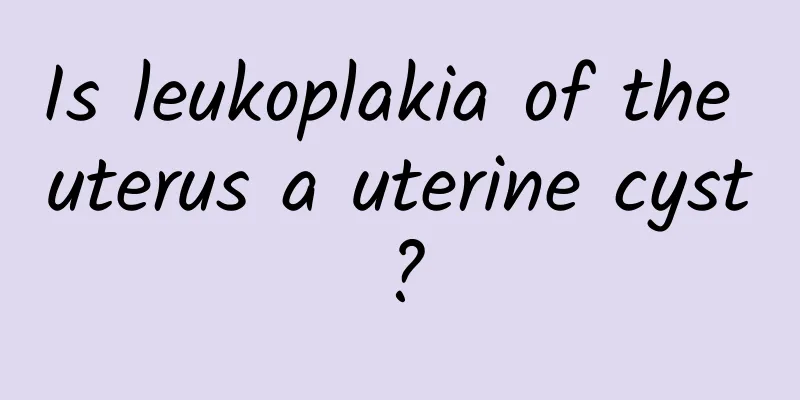Is leukoplakia of the uterus a uterine cyst?

|
Uterine leukoplakia is not a uterine cyst. The two are different types of gynecological diseases with different causes, symptoms and treatments. 1. The causes of uterine leukoplakia and uterine cysts are different. Uterine leukoplakia is a white patch that appears on the cervix or vaginal wall mucosa, which may be related to chronic inflammation, local tissue damage or malnutrition. Uterine cysts are cystic lesions formed in the uterus or on the uterine wall, which are common in uterine fibroid degeneration, endometriosis or abnormal hormone levels. 2. The symptoms of uterine leukoplakia and uterine cysts are different. Uterine leukoplakia may be accompanied by local itching, pain or abnormal secretions, which may affect the quality of life in severe cases. The symptoms of uterine cysts include irregular menstruation, lower abdominal pain or discomfort during sexual intercourse, and larger cysts may compress surrounding tissues. 3. Treatments for leukoplakia of the uterus include topical medications such as anti-inflammatory ointments, laser therapy or local cryotherapy. In severe cases, surgery is required to remove the diseased tissue. The treatment of uterine cysts depends on the type and size of the cysts. Small cysts can be observed and followed up, while larger cysts require surgical removal, such as laparoscopic surgery, endometrial resection or hysterectomy. 4. In terms of prevention, leukoplakia of the uterus requires personal hygiene, avoiding excessive cleaning and the use of irritating chemicals. Regular gynecological examinations can help early detection. The prevention of uterine cysts emphasizes maintaining hormone balance, avoiding long-term excessive stress, and moderate exercise and a balanced diet can also help reduce the risk of disease. Although both uterine leukoplakia and uterine cysts are common gynecological diseases, their causes, symptoms and treatments are significantly different and need to be diagnosed and treated according to specific circumstances. Timely medical treatment and scientific management are the key to preventing and controlling these two diseases. |
<<: How to treat abnormal leucorrhea with foul odor
>>: Will endometriosis get better after cesarean section?
Recommend
Is ovarian cyst easy to treat?
Is cystic ovarian cyst easy to treat? Medically, ...
What are the common causes of vaginitis?
Vaginitis is one of the most common gynecological...
Explain the main factors affecting the cost of abortion surgery
The cost of abortion is also a matter of great co...
How to regulate irregular menstruation most effectively
There is no such thing as the most effective way ...
Only by taking good care of adnexitis can we keep the disease away from us
The occurrence of adnexitis brings a lot of incon...
What are the symptoms of residual discharge after abortion? There are 4 symptoms of residual discharge after abortion
Although abortion is a minor operation, the harm ...
What are the consequences of uterine effusion?
What are the dangers of uterine effusion? The occ...
There are many ways to treat dysmenorrhea in women
Women should all know about dysmenorrhea, which i...
To prevent fat accumulation and obesity, is guava a magic weapon? Nutritionist He Ziyi: Eating 4 kinds of high-fiber fruits can help you lose weight
Abdominal fat accumulation is not only a big enem...
How to treat ovarian cysts correctly
Basically, every female friend will encounter gyn...
What are the symptoms of severe cervical erosion?
What are the symptoms of severe cervical erosion?...
How to use medication for malignant hyperprolactinemia
Hyperprolactinemia usually occurs in women of chi...
Junior high school students use New Year's money to get abortions
In the past two days, the news of a 9-year-old gi...
Hyperprolactinemia diagnostic process
The occurrence of hyperprolactinemia is closely r...
Learn about the symptoms of early cervicitis
The symptoms of early cervicitis are not easy to ...









